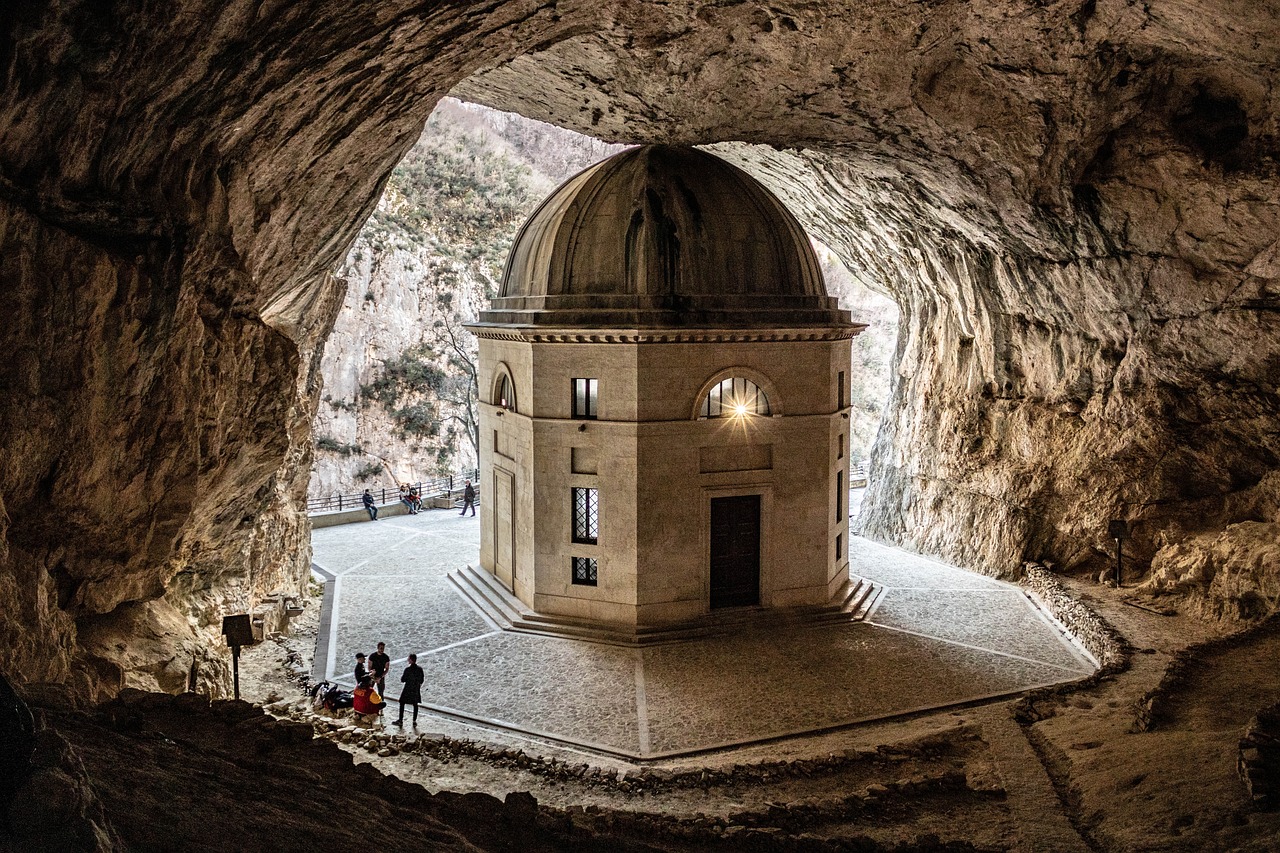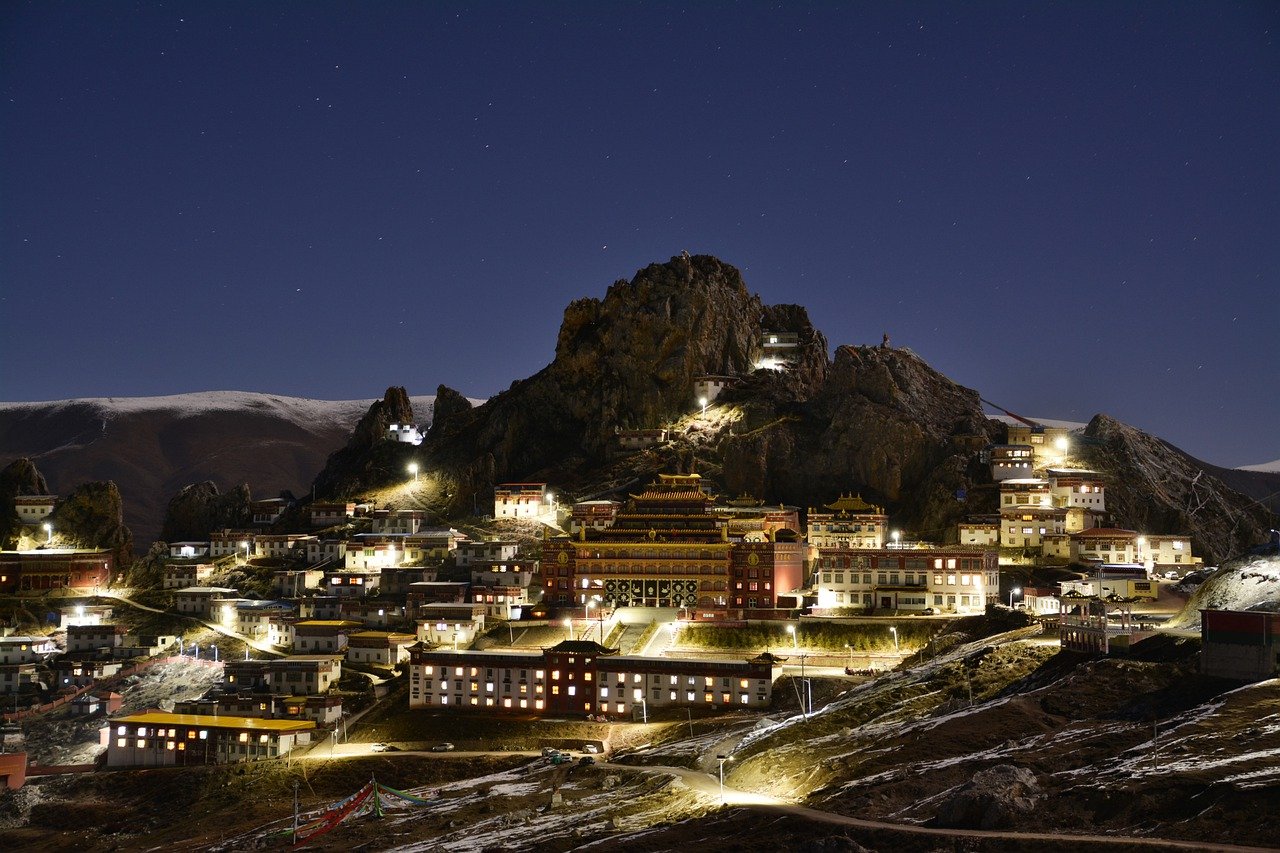You have stumbled upon a hidden gem in Southeast Asia – a region brimming with diverse cultures, beautiful temples, and warm hospitality. From the bustling city of Kuala Lumpur to the serene Gili Islands, there is something for every traveler’s taste. Whether you’re exploring the ancient wonders of Angkor in Cambodia or unwinding on the beaches of Bali, Southeast Asia offers a unique blend of history, nature, and adventure.
Each destination in Southeast Asia holds its own charm and allure, beckoning you to embark on a journey of discovery. Whether you’re wandering the ancient streets of Hanoi, admiring the rice terraces in Ifugao, or marveling at the limestone karst islands in Ha Long Bay, there is no shortage of breathtaking sights to behold. So pack your bags, grab your camera, and get ready to immerse yourself in the wonders of the Temples of Southeast Asia.
Overview of Southeast Asia
Southeast Asia is a vibrant region located between the Indian and Pacific Oceans, encompassing countries with diverse cultures influenced by Indian, Chinese, and Western traditions. Known for its stunning beaches, delectable cuisine, and affordability, Southeast Asia has become a popular destination for travelers, especially backpackers. From the warm tropical climate to a wide range of accommodations, the region offers a unique travel experience different from the Western world. Some of the top places to visit include Vientiane, Hanoi, Kuala Lumpur, Gili Islands, Phnom Penh, and Chiang Mai, each offering its own set of attractions and experiences.
Geographical location
Situated between the Indian Ocean and the Pacific Ocean, Southeast Asia is a group of diverse countries with lush landscapes, pristine beaches, and stunning natural beauty. From the bustling cities to serene villages, the region boasts a mix of urban and rural settings that cater to various travel preferences.
Cultural influences
Drawing inspiration from indigenous cultures as well as Indian, Chinese, and Western influences, Southeast Asia showcases a rich tapestry of traditions, art, and spirituality. Temples, in particular, play a significant role in shaping the cultural landscape of the region, reflecting centuries-old customs and beliefs.
Popular attractions
Southeast Asia offers numerous attractions for travelers to explore, from historical sites to natural wonders. Places like Angkor in Cambodia, Bali in Indonesia, Ha Long Bay in Vietnam, and Bagan in Myanmar are just a few examples of the diverse and captivating destinations waiting to be discovered in the region.
Why Explore Temples in Southeast Asia?
Exploring temples in Southeast Asia offers a unique opportunity to immerse yourself in the rich cultural heritage of the region. From architectural marvels to spiritual sanctuaries, temples hold profound significance in the history and beliefs of the local communities.
Rich cultural heritage
Temples in Southeast Asia serve as a testament to the region’s rich cultural heritage, showcasing intricate artwork, ornate carvings, and centuries-old traditions. Each temple tells a story of the past, offering visitors a glimpse into the historical and religious practices of the area.
Architectural wonders
The temples in Southeast Asia are renowned for their awe-inspiring architecture, featuring intricate designs, towering spires, and intricate details that showcase the craftsmanship and skill of ancient builders. Visiting these temples allows you to admire the beauty and grandeur of these architectural marvels up close.
Spiritual significance
For many locals and visitors alike, temples hold deep spiritual significance, serving as places of worship, meditation, and reflection. These sacred sites are believed to be imbued with positive energy and provide a serene environment for spiritual contemplation and peace of mind.

Top Temples in Southeast Asia
When exploring temples in Southeast Asia, several iconic sites stand out for their historical importance, architectural beauty, and spiritual allure.
Angkor Wat in Cambodia
One of the most famous temple complexes in the world, Angkor Wat in Cambodia is a UNESCO World Heritage Site known for its grandeur and intricate stone carvings. The temple’s massive size and stunning architecture make it a must-visit destination for travelers.
Borobudur in Indonesia
Located on the island of Java, Borobudur is the largest Buddhist temple in the world, with nine stacked platforms featuring intricate reliefs and statues. The temple’s serene surroundings and spiritual atmosphere make it a popular spot for meditation and contemplation.
Shwedagon Pagoda in Myanmar
Perched on a hill in Yangon, the Shwedagon Pagoda is a golden stupa that is considered one of the holiest Buddhist sites in Myanmar. The pagoda’s gleaming facade and ornate design attract pilgrims and tourists from around the world.
Wat Pho in Thailand
Known for its giant reclining Buddha statue, Wat Pho in Bangkok is a prominent temple complex with beautifully decorated pagodas, colorful murals, and traditional Thai architecture. The temple is also a center for traditional Thai massage and healing arts.
Temple Etiquette and Respect
When visiting temples in Southeast Asia, it is important to observe proper etiquette and show respect for the sacredness of these cultural sites.
Dress code
To show respect for the religious customs and traditions of Southeast Asia, visitors should dress modestly when entering temples. This typically means covering your shoulders, wearing long pants or skirts, and avoiding revealing clothing.
Behavior guidelines
While inside a temple, it is essential to maintain a quiet and respectful demeanor. Refrain from loud talking, running, or other disruptive behavior that may disturb worshippers or disrupt the peaceful atmosphere of the temple.
Photography rules
Before taking photos inside a temple, make sure to check if photography is allowed. Some temples may have restrictions on where and when you can take pictures, so always ask for permission and respect any guidelines provided by the temple staff.

Exploring Temples in Different Southeast Asian Countries
Each Southeast Asian country offers a unique experience when it comes to exploring temples, with distinct architectural styles, cultural practices, and spiritual traditions to discover.
Cambodia – Angkor Wat
In Cambodia, a visit to Angkor Wat is an unforgettable journey through ancient Khmer history and culture. Explore the intricate stone carvings, towering spires, and hidden chambers of this iconic temple complex.
Thailand – Wat Pho
Wat Pho in Bangkok is a cultural gem that showcases traditional Thai architecture, exquisite craftsmanship, and a serene atmosphere perfect for quiet contemplation. Don’t miss the chance to see the massive reclining Buddha statue up close.
Indonesia – Borobudur
Travel to Java in Indonesia to witness the grandeur of Borobudur, a colossal Buddhist temple adorned with intricate reliefs and statues. Climb to the top of the temple for panoramic views of the surrounding landscape.
Myanmar – Shwedagon Pagoda
The Shwedagon Pagoda in Yangon, Myanmar, is a sacred site that exudes peace and spirituality. Marvel at the golden stupa, explore the surrounding shrines, and soak in the mystical ambiance of this revered temple.
Off the Beaten Path Temples
While popular temples draw large crowds, there are hidden gems worth exploring off the beaten path in Southeast Asia. These lesser-known temples offer a more intimate and tranquil experience for travelers seeking spiritual solace.
Wat Rong Khun in Thailand
Also known as the White Temple, Wat Rong Khun in Chiang Rai, Thailand, is an unconventional and modern architectural marvel. The temple’s intricate white facade, ornate sculptures, and unique design make it a must-visit destination for art and architecture enthusiasts.
Banteay Srei in Cambodia
Located near Angkor Wat, Banteay Srei is a small temple known for its exquisite pink sandstone carvings and intricate details. The temple’s delicate artwork and well-preserved architecture showcase the mastery of ancient Khmer artisans.
Prambanan in Indonesia
Prambanan is a majestic Hindu temple complex near Yogyakarta, Indonesia, featuring towering stone spires and intricate reliefs dedicated to the Hindu gods. Explore the ancient ruins and immerse yourself in the spiritual ambiance of this cultural treasure.
Bagan in Myanmar
The ancient city of Bagan in Myanmar is home to thousands of pagodas, temples, and stupas spread across a vast archaeological site. Rent a bike or hire a hot air balloon to witness the surreal sunrise or sunset views over this enchanting temple city.

Temple Festivals and Celebrations
Throughout Southeast Asia, temples play a central role in various festivals and celebrations that highlight the region’s cultural diversity and traditions. Attending these vibrant events offers a firsthand experience of the local customs and religious practices.
Songkran in Thailand
Songkran, the Thai New Year festival, is celebrated with water fights, street processions, and merit-making ceremonies at temples. Join in the festive spirit as locals and visitors splash water on each other as a symbol of washing away the past year’s sins.
Vesak Day in Indonesia
Vesak Day, also known as Buddha’s Birthday, is a significant Buddhist festival observed in Indonesia with temple rituals, alms-giving ceremonies, and lantern processions. Take part in the celebrations to honor the life and teachings of Buddha.
Pchum Ben in Cambodia
Pchum Ben, the Ancestor’s Day festival in Cambodia, is a time for paying respect to deceased relatives and making offerings at temples. Participate in the traditional rituals and religious ceremonies held at pagodas across the country.
Thadingyut Festival in Myanmar
Thadingyut, the Festival of Lights in Myanmar, marks the end of the Buddhist Lent with illuminated decorations, temple fairs, and candlelit processions. Experience the magical atmosphere of this festival as temples and homes are adorned with colorful lights and lanterns.
Tours and Guides for Temple Exploration
When it comes to exploring temples in Southeast Asia, there are various options available for travelers seeking guidance, information, and local insights. From organized tours to self-guided adventures, you can choose the best way to experience the wonders of temple exploration in the region.
Local tour operators
Local tour operators in Southeast Asia offer guided temple tours that provide in-depth knowledge, historical context, and cultural background about the temples you visit. Joining a guided tour can enhance your temple experience and help you appreciate the significance of these sacred sites.
Self-guided tours
For independent travelers who prefer to explore at their own pace, self-guided temple tours allow you to create your itinerary, discover hidden gems, and immerse yourself in the local culture. Use guidebooks, maps, and online resources to plan your temple-hopping adventure.
Cultural guides
Engage with local cultural guides who can offer insider tips, historical anecdotes, and personal stories about the temples you visit. These knowledgeable guides provide valuable insights into the spiritual practices, architectural styles, and cultural traditions of each temple.
Temple-specific tours
Join temple-specific tours that focus on a particular site or theme, such as architectural highlights, religious rituals, or historical significance. These specialized tours provide a deep dive into a specific aspect of temple exploration, allowing you to gain a deeper understanding of the site’s cultural and spiritual relevance.

Tips for Exploring Temples in Southeast Asia
To make the most of your temple exploration in Southeast Asia, keep these helpful tips in mind to ensure a memorable and respectful experience.
Stay hydrated
The tropical climate in Southeast Asia can be hot and humid, especially when visiting temples during the day. Stay hydrated by carrying a water bottle with you and taking breaks to avoid dehydration and fatigue.
Respect local customs
Observe local customs and traditions when visiting temples, such as removing your shoes before entering, covering your shoulders, and refraining from disruptive behavior. Show respect for the sacredness of the site and follow any guidelines provided by temple staff.
Take off your shoes before entering
In many Southeast Asian cultures, it is customary to remove your shoes before entering a temple or sacred space as a sign of respect and humility. Follow this practice to show reverence for the religious beliefs and traditions of the local community.
Beware of scams
Be cautious of scams and touts around popular temple sites, especially in tourist-heavy areas. Avoid engaging with suspicious individuals offering dubious services, and always be vigilant when exploring unfamiliar surroundings.
Conclusion
Southeast Asia offers a mesmerizing array of temples that embody the region’s rich history, cultural diversity, and spiritual heritage. By exploring these sacred sites with an open heart, a respectful attitude, and a keen sense of curiosity, you can gain a deeper appreciation for the art, architecture, and traditions that make temple exploration in Southeast Asia truly magical. Whether you are drawn to the grandeur of Angkor Wat, the serenity of Borobudur, or the spiritual aura of Shwedagon Pagoda, each temple beckons you to embark on a journey of discovery and enlightenment in this enchanting corner of the world.
Explore all the places seen in this video: [Best Places to Visit in Southeast Asia](https://www.touropia.com/best-places-…
When you visit Southeast Asia, you’ll discover a group of diverse countries located between the Indian Ocean and the Pacific Ocean. These countries feature indigenous cultures influenced by Indian, Chinese, and Western culture. It has always been a popular destination for globe-trotting backpackers due to its stunning beaches, delicious cuisine, and affordable prices. The region offers a unique culture for Western travelers. Instead of cathedrals, you’ll find temples scattered throughout the region. Instead of cold winter temperatures, you’ll be surrounded by a tropical climate. You may come across simple accommodations in remote fishing villages or luxurious hotels in the bustling cities and picturesque islands. Take a closer look at some of the best places to explore in Southeast Asia.
Powered by Azon AutoSites

